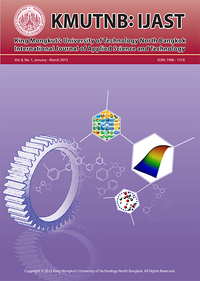Influence of Fabric Parameters on Surface Waviness of FRPC: An Experimental Investigation and Development of a Model on Surface Waviness
Main Article Content
Abstract
This paper deals with the surface development of continuous fiber-reinforced thermoplastic composites, so called organic sheets, during processing. To investigate the effect of the textile parameters on the surface development organic sheets with different steel wire fabrics and a polycarbonate matrix were manufactured using a laboratory press. The fabrics differed in fiber diameter and mesh size. The results showed that both textile parameters have a significant influence on the characteristic surface waviness of the FRPC. Increasing fiber diameters and mesh sizes lead to higher maximum waviness. Organic sheets with a fiber diameter of the reinforcement less or equal 50 μm could not be differentiated anymore and had no visible waviness. Based on the equation for linear thermal expansion a thermo rheological process model was developed to predict the surface waviness. The model describes the waviness creation including a pressure induced compensating polymer flow. A waviness comparison of experimental data with calculated results shows a good agreement.


